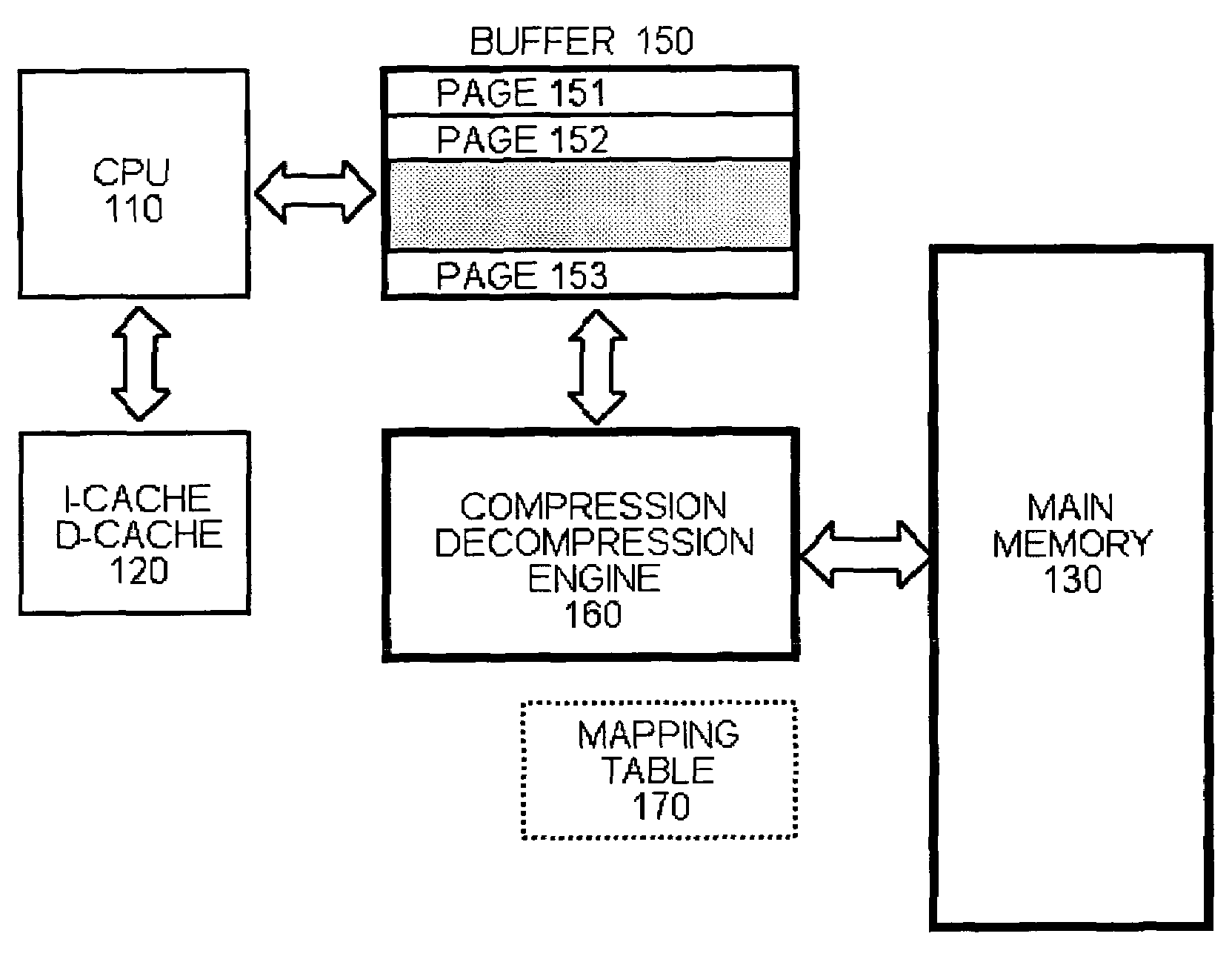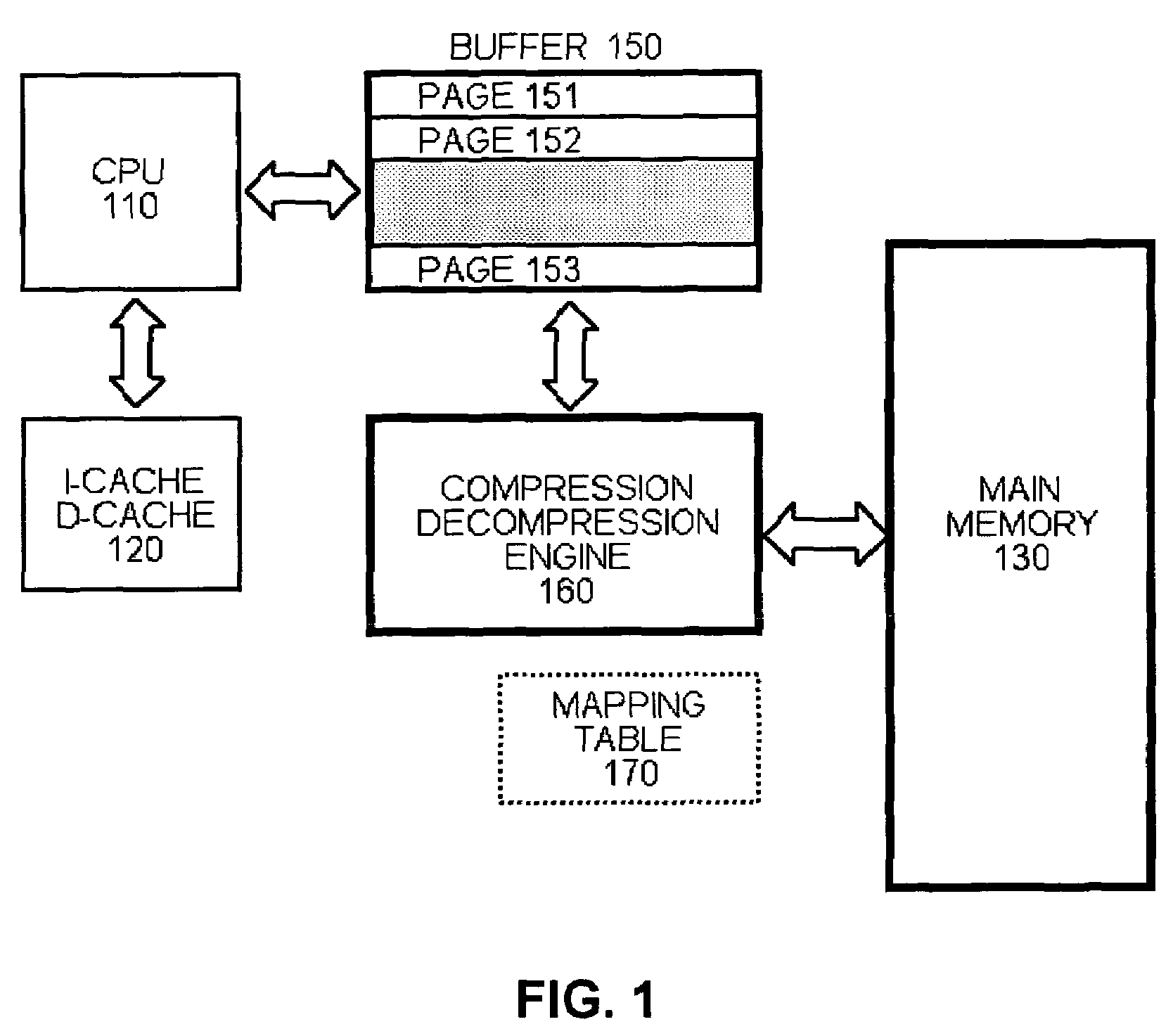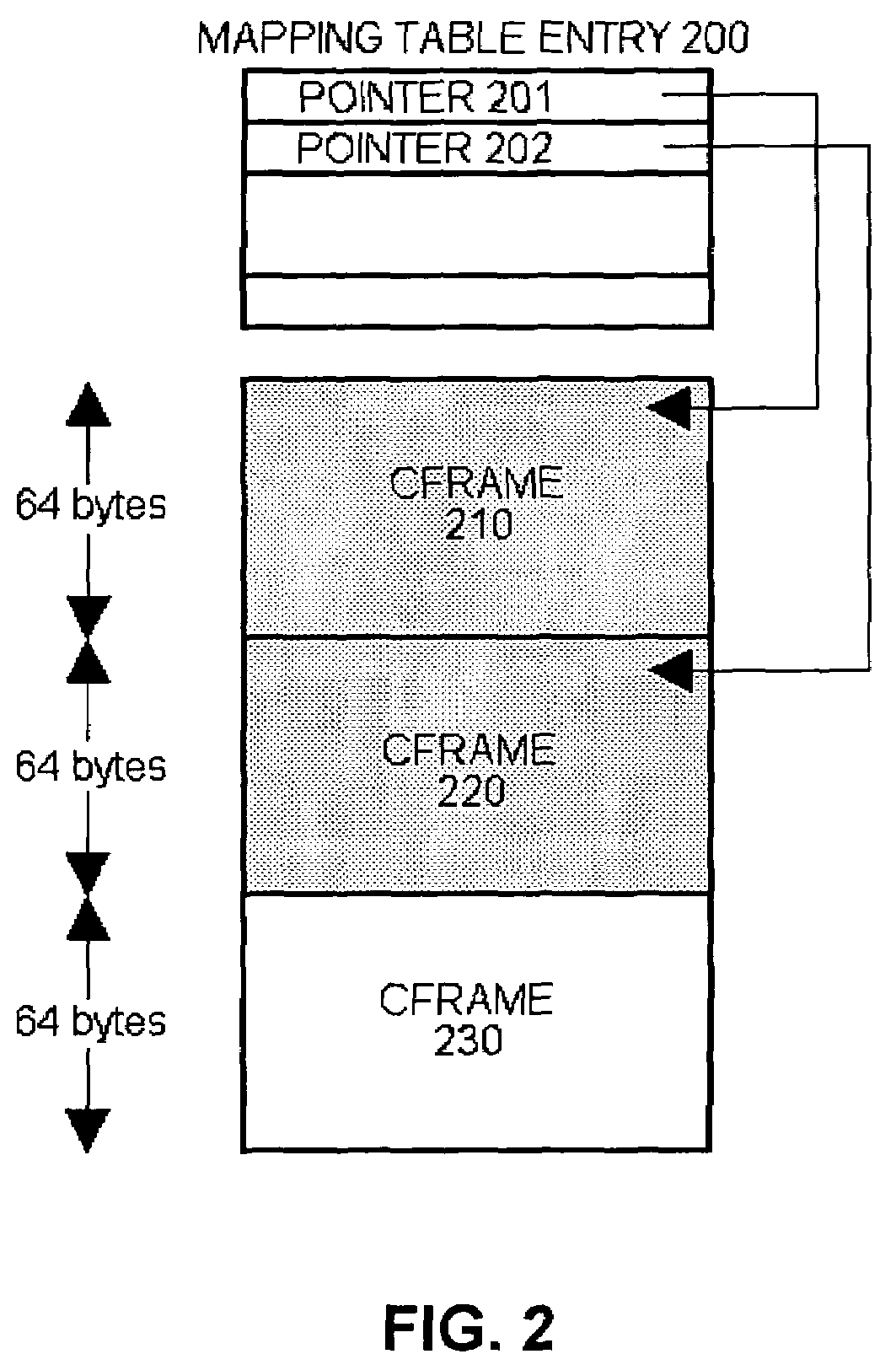Compressed memory architecture for embedded systems
a memory architecture and embedded system technology, applied in the field of memory architectures, can solve the problems of insufficient memory savings for additional compression hardware, small hardware size, and complex functionality of embedded system design, and achieve the effects of reducing memory usage, fast compression speed, and reducing memory consumption
- Summary
- Abstract
- Description
- Claims
- Application Information
AI Technical Summary
Benefits of technology
Problems solved by technology
Method used
Image
Examples
Embodiment Construction
[0014]FIG. 1 is a diagram illustrating the various levels of memory hierarchy that can be used in a system built in accordance with an embodiment of an aspect of the invention. A central processing unit (CPU) 110 is shown in FIG. 1 which may or may not have one or more levels of caching 120. The cache(s) 120 can be an instruction and / or data cache. It should be noted that the memory compression architecture disclosed herein is advantageously independent of the particular CPU and caching hierarchy utilized. This approach does not require or assume any level of caching and can be readily implemented in a system without any cache. It is assumed for illustration that the system does not provide for virtual memory.
[0015]Existing architectures with multiple levels of memory hierarchy have typically been designed with a focus on performance. Given the significant performance overhead in compressing data in addition to code, it is generally beneficial to compress and decompress at levels of...
PUM
 Login to View More
Login to View More Abstract
Description
Claims
Application Information
 Login to View More
Login to View More - R&D
- Intellectual Property
- Life Sciences
- Materials
- Tech Scout
- Unparalleled Data Quality
- Higher Quality Content
- 60% Fewer Hallucinations
Browse by: Latest US Patents, China's latest patents, Technical Efficacy Thesaurus, Application Domain, Technology Topic, Popular Technical Reports.
© 2025 PatSnap. All rights reserved.Legal|Privacy policy|Modern Slavery Act Transparency Statement|Sitemap|About US| Contact US: help@patsnap.com



